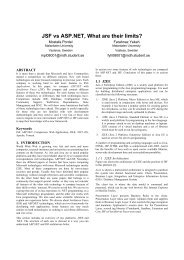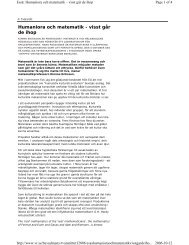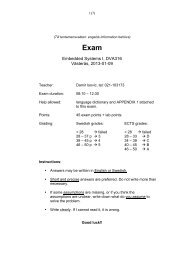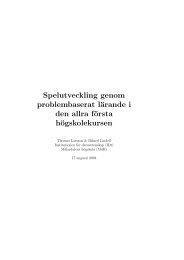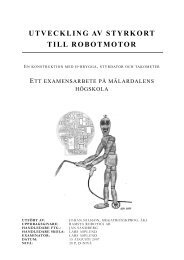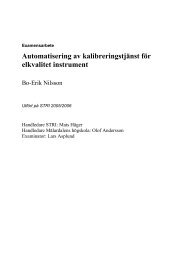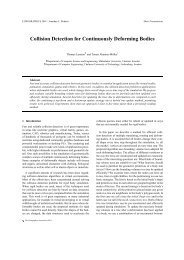UML PROFILE FOR SAVECCM - Research
UML PROFILE FOR SAVECCM - Research
UML PROFILE FOR SAVECCM - Research
You also want an ePaper? Increase the reach of your titles
YUMPU automatically turns print PDFs into web optimized ePapers that Google loves.
<strong>UML</strong><br />
In four layer metamodel hierarchy, user defined profile is at the same layer as<br />
user model. Elements are instances of metaclass Class and Stereotype from<br />
Profiles package.<br />
4.6.2.1 Description of classes in Profiles package<br />
Profiles package specifies several metaclasses in order to provide lightweight<br />
extension mechanism to the <strong>UML</strong> standard. These classes are: Class,<br />
Extension, ExtensionEnd, Image, Package, Profile,<br />
ProfileApplication and Stereotype. Some of them are shortly described in<br />
this section, for more details refer to [<strong>UML</strong>s 07].<br />
Package<br />
In the Package metaclass, a package functionality is extended with an ability to<br />
indicate the profiles applied to a package. A package can have one or more<br />
ProfileApplications to indicate which profiles have been applied. Because a<br />
profile is a package, it is possible to apply a profile not only to packages, but also<br />
to profiles.<br />
Profile<br />
A Profile is a coherent set of extensions applicable to a given domain or<br />
purpose. This metaclass inherits Package metaclass and is a restricted form of a<br />
metamodel that must always be related to a reference metamodel, such as <strong>UML</strong>.<br />
A Profile defines a limited capability to extend metaclasses of the reference<br />
metamodel and it cannot be used without its reference metamodel.<br />
Stereotype<br />
Stereotype describes how an existing metaclass can be extended. It is a kind of<br />
Class and extends Classes.<br />
Each stereotype S must extend at least one metaclass C. The properties of S<br />
encode the additional "semantics" of the instances of C stereotyped by S as<br />
compared to those that are not. Stereotype must always be used in conjunction<br />
with one of the metaclasses it extends.<br />
Each stereotype may extend one or more classes through extensions as part of<br />
a profile. Similarly, a class may be extended by one or more stereotypes.<br />
Stereotype is the only kind of metaclass that cannot be extended by stereotypes.<br />
A number of <strong>UML</strong> pre-defined stereotypes exist that apply to a component. For<br />
example, «subsystem» to model large-scale components, and «specification» and<br />
«realization» to model components with distinct specification and realization<br />
definitions etc.<br />
33



